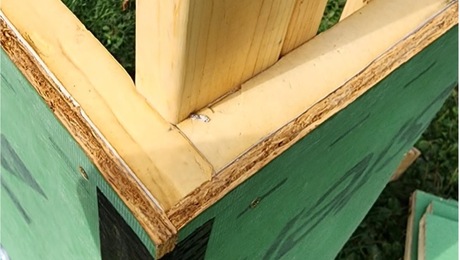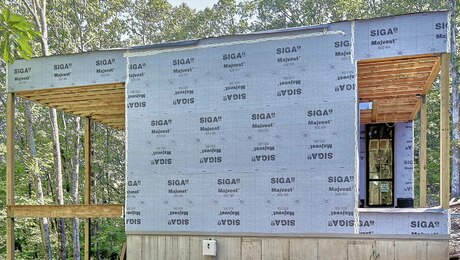Roof rigid foam – paper faced vs. foil
Hello all,
Been lurking here for a while, but first time posting.
TLDR version: I’m planning for two layers of polyiso on a vented roof deck w/ asphalt shingle roof…bottom layer 3.5” and top 2.5”. Should both layers be foil faced, paper faced or mixture of both?
More details:
Inside to out:
rafters are going to be sistered 2x6s
1/2” existing sheathing
peal and stick
lookouts for overhangs (risinger build style)
3.5” iso
2” iso
2×4 on flat @ 16” center for vented roof deck
5/8” zip
asphalt shingles
House will have 3.5” polyiso on exterior walls with 3/4” rain screen vented to soffits up the roof deck. Can I eliminate soffit vents if the roof can pull air from the base of the siding?
I’m in the planning stages of an exterior remodel in a neglected 1960s home that we just purchased. The house is in need of a new roof and new siding. Working with an engineer for details to ensure the roof can support the weight of the new roof to convert to an unvented attic. Wanting to take advantage of current rebates and move toward an all electric house in climate zone 5.
thanks everyone for your feedback
Matt
GBA Detail Library
A collection of one thousand construction details organized by climate and house part









Replies
Matt,
There are a couple of reasons you may not want to connect your rain-screen gap on the walls to your roof vent channel.
- One of the purposes of your rain-screen is to vent moisture from the wall cavity. It doesn't make much sense to send this air into your roof system.
- A 3/4" gap is unlikely to yield the free vent area your roof requires - especially as the air moving through such a narrow channel will have friction losses.
Malcolm,
So what would your ideal solution look like in my scenario? Thank you for your expertise!
Matt,
With 3.5" of polyiso on the walls, there isn't going to be much drying to the outside. I wouldn't vent the top of the rain-screen cavity - or alternately I would vent it below the soffit.
You should read this:
https://buildingscience.com/documents/building-science-insights/bsi-141-shakespeare-does-roofs
Also be sure to take a look at figure 3, shows fascia vents.
Freyr,
Thanks for the quick reply…So what would you suggest then on the detail?
Matt
As Malcolm said I would vent under soffit if it all for the rainscreen. If you are trying to prevent ice damming on the roof I would use fascia vents and continue insulation over eave as shown in that article. If you don’t do this I would not vent the roof. I have never heard of paper faced poly but paper does not seem ideal.
As for the second roof deck I don’t think zip would be particularly called for as it is not providing an air barrier, you might be better suited with a standard 5/8 ply, personal choice.
Figure 3 on the BSC article seems like it could work but Risinger used his entire soffit as vents for the roof, not just the fascia like that figure shows. He is also in CZ2 instead of 5 so maybe that’s why. He did not have insulation in the soffit area, only on the roof portion. I am also in CZ2 and do not know anything about ice dams.